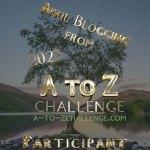 The A to Z Challenge asks bloggers to post 26 posts, one for each letter of the English alphabet, in April. Most of us choose to make these posts on a particular theme. My theme for 2023 is 1943 Washington D.C., the setting of the novel that I'm writing. Visit daily in April for a new post on my topic.
The A to Z Challenge asks bloggers to post 26 posts, one for each letter of the English alphabet, in April. Most of us choose to make these posts on a particular theme. My theme for 2023 is 1943 Washington D.C., the setting of the novel that I'm writing. Visit daily in April for a new post on my topic.
I is for Independence Day
In 1943, July the 4th was a Sunday. Since most government employees took only Christmas as a holiday and worked six days a week, with Sunday as their only off day, this was fortunate timing.
There were no fireworks in Washington, D.C. to celebrate Independence Day in 1943. That was the first year since World War I that Washingtonians had been denied a spectacular show. The gun powder used in fireworks was needed for ammunition in the war. I also suspect that loud explosions would have been alarming to people in the nation's capital which was preparing itself for a possible attack (see D is for Defense Parade).
Instead, there were two back-to-back evening programs. If you had the energy, you could easily attend the first near the Washington Monument and walk to the second near the Lincoln Memorial.
Washington had experienced a long heat wave in June, with temperatures at 90 degrees or above for 10 days in a row. The high of 81 degrees on the 4th of July would have felt relatively pleasant. You would have been wise to bring an umbrella, however. The audience for the second program experienced some raindrops before intermission.
The first program was at the National Sylvan Theater, an outdoor theater that holds concerts and events to the present day. This event included a concert by the United States Marine Band, a procession of flags of the allied countries, and a reading of the Declaration of Independence.
The second program took place at the Watergate. Nowadays, we think of Watergate as a hotel where a famous crime took place. Originally, the water gate was built as a grand entrance by water to Washington, D.C. from the Potomac River, although it was never used for the purpose of welcoming VIPs.
The Watergate Steps, as we now call them to distinguish them from the hotel, are overlooked and under-utilized currently, but it was a venue for summer concerts from 1935 until 1965 when noise from airplanes became too disruptive.
In 1943, the July 4th concert at the Watergate was performed by the National Symphony Orchestra. The featured performer was pianist Army Staff Sergeant Eugene List. List had been a famous pianist since his first concert at age 16 in 1934. In spite of that, he volunteered for the Army where he was assigned to Special Services. He performed at home and abroad during the war, to raise money and to entertain the troops. The concert included many pieces by American composers to honor Independence Day.
Here are the Washington Post articles that provided details for this post. I access the ProQuest Historical Newspapers collection with my St. Louis County Library card.
Plans ready for july 4th celebration. (1943, Jul 02). The Washington Post (1923-1954) Retrieved from https://www.proquest.com/historical-newspapers/plans-ready-july-4th-celebration/docview/151632809/se-2 Patriotism to reign at watergate. (1943, Jul 04).The Washington Post (1923-1954) Retrieved from https://www.proquest.com/historical-newspapers/patriotism-reign-at-watergate/docview/151625361/se-2 By Ray C.B. Brown. (1943, Jul 05). Watergate concert contributes to spirit of independence day. The Washington Post (1923-1954) Retrieved from https://www.proquest.com/historical-newspapers/watergate-concert-contributes-spirit-independence/docview/151651145/se-2

About Joy Weese Moll
a librarian writing about books
